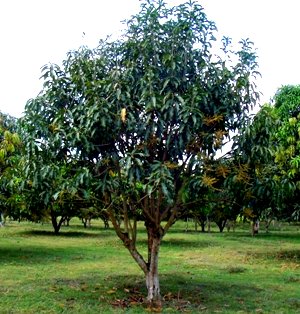The calamondin tree ( x Citrofortunella microcarpa, syn. Citrus microcarpa, Citrus mitis and x Citrofortunella mitis), is also known as China orange and golden lime; calamansi, kalamansi, kalamonding and limonsito in the Philippines; jeruk peres, jeruk kasturi, and jeruk potong in Indonesia; limau kesturi and limau chuit in Malaysia; and sommapit, somchit and manao-wan in Thailand.
This fruit crop probably originated in China as a result of the natural crossing between mandarin and kumquat.
It is now widely grown in India and all over South and Southeast Asia, and almost everywhere. In some countries, it is a popular house plant.

